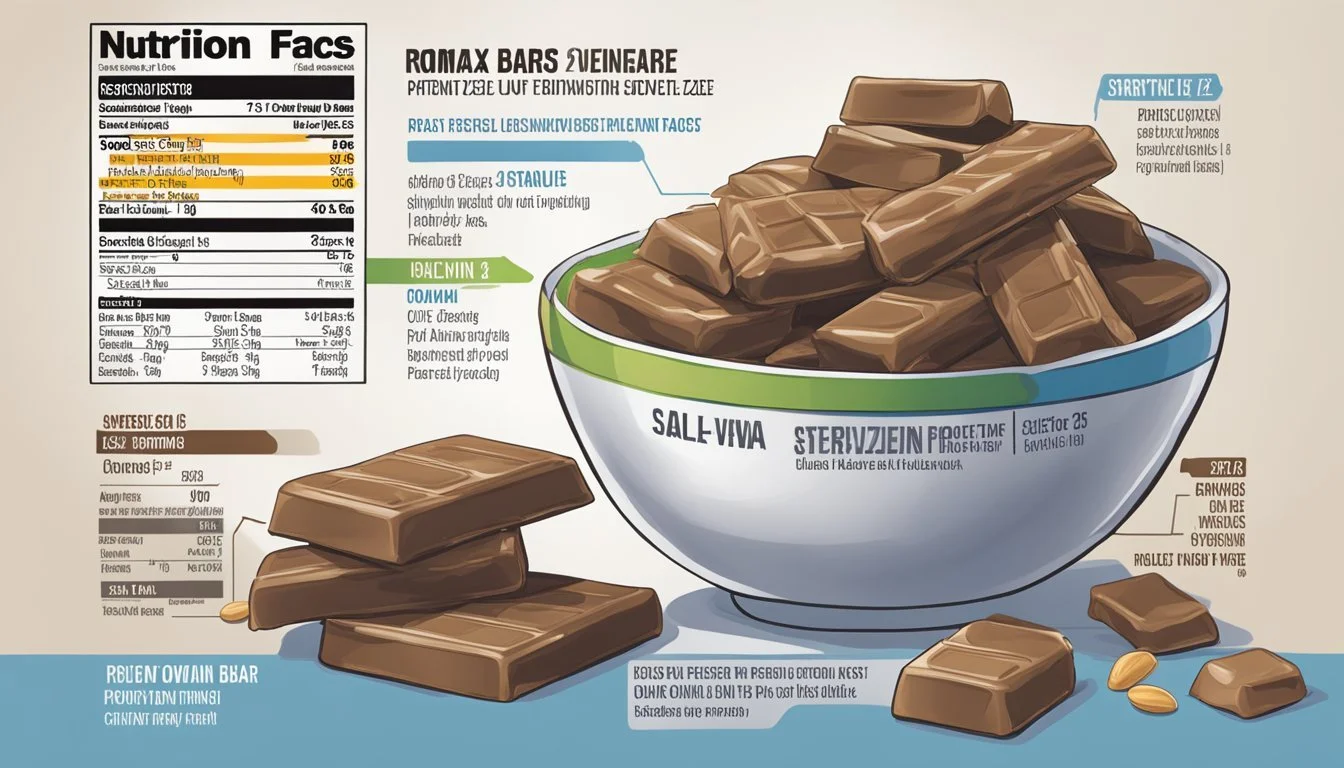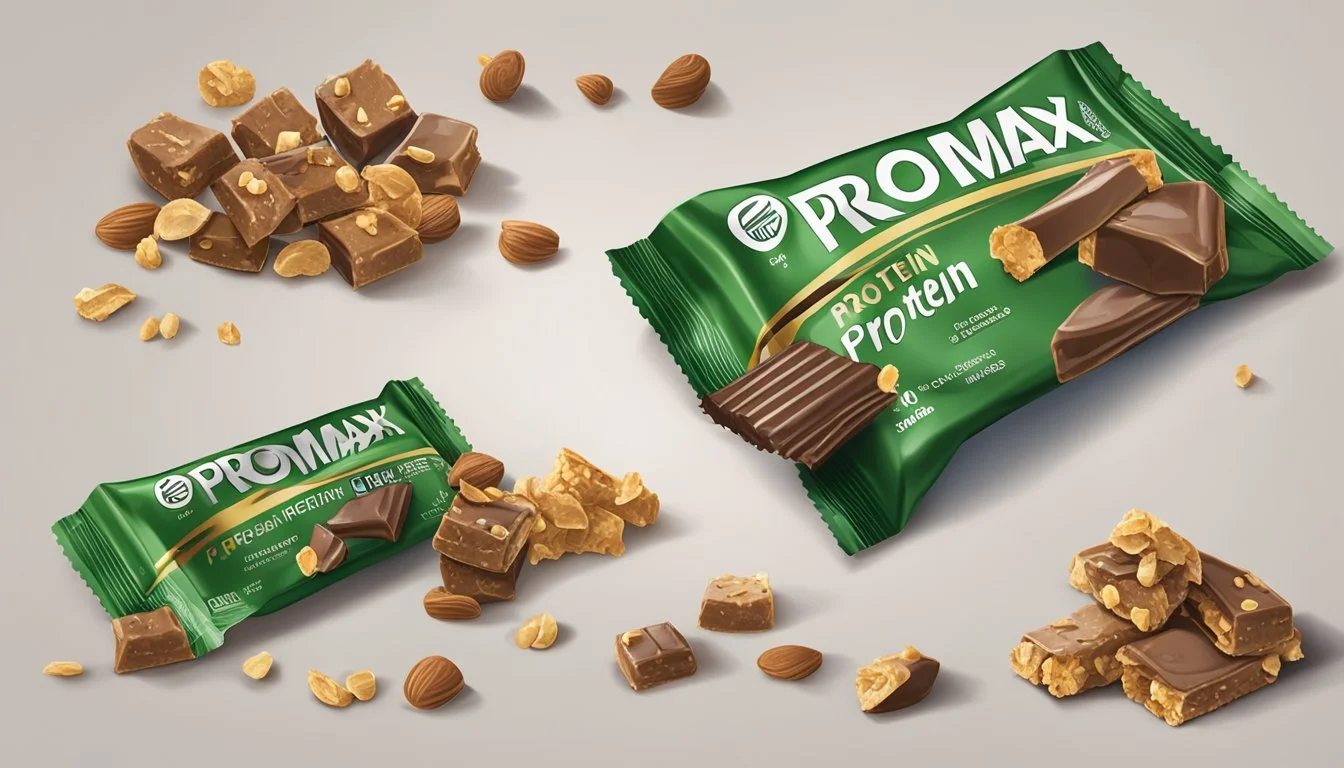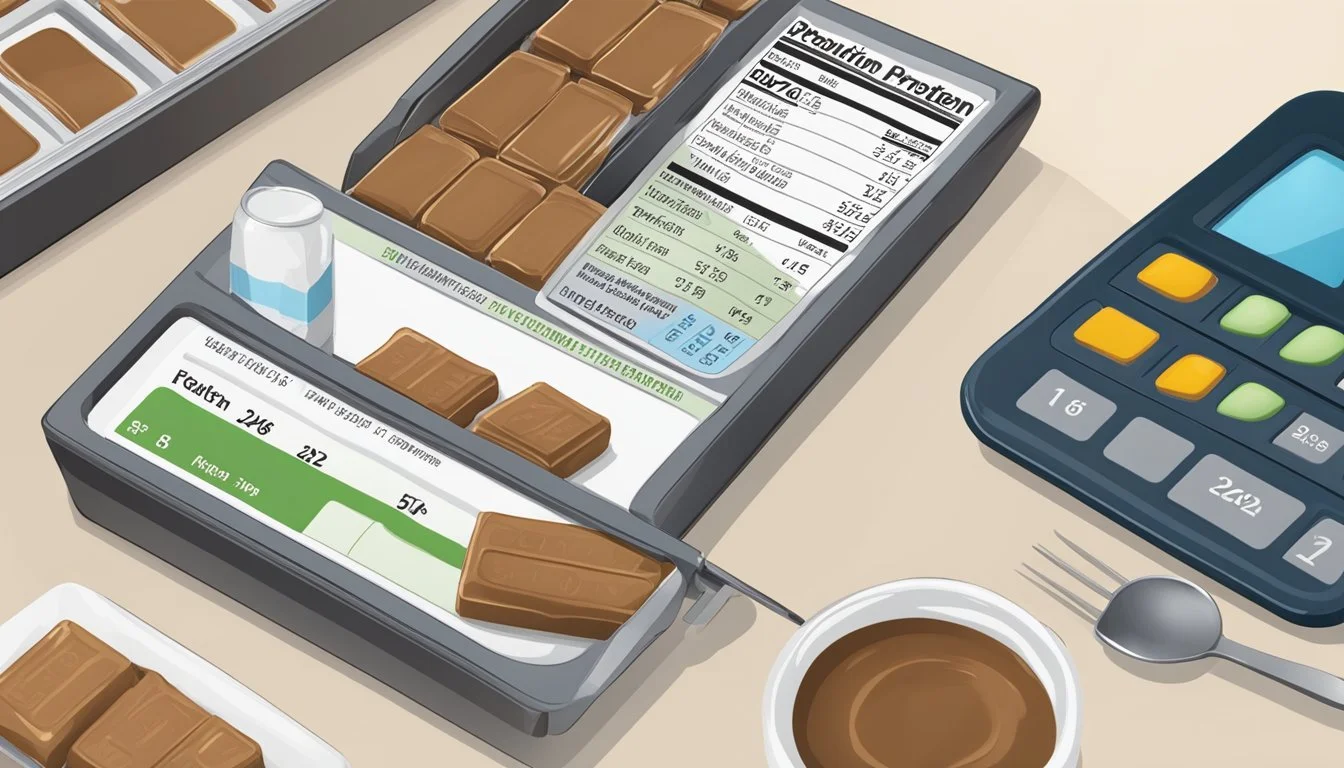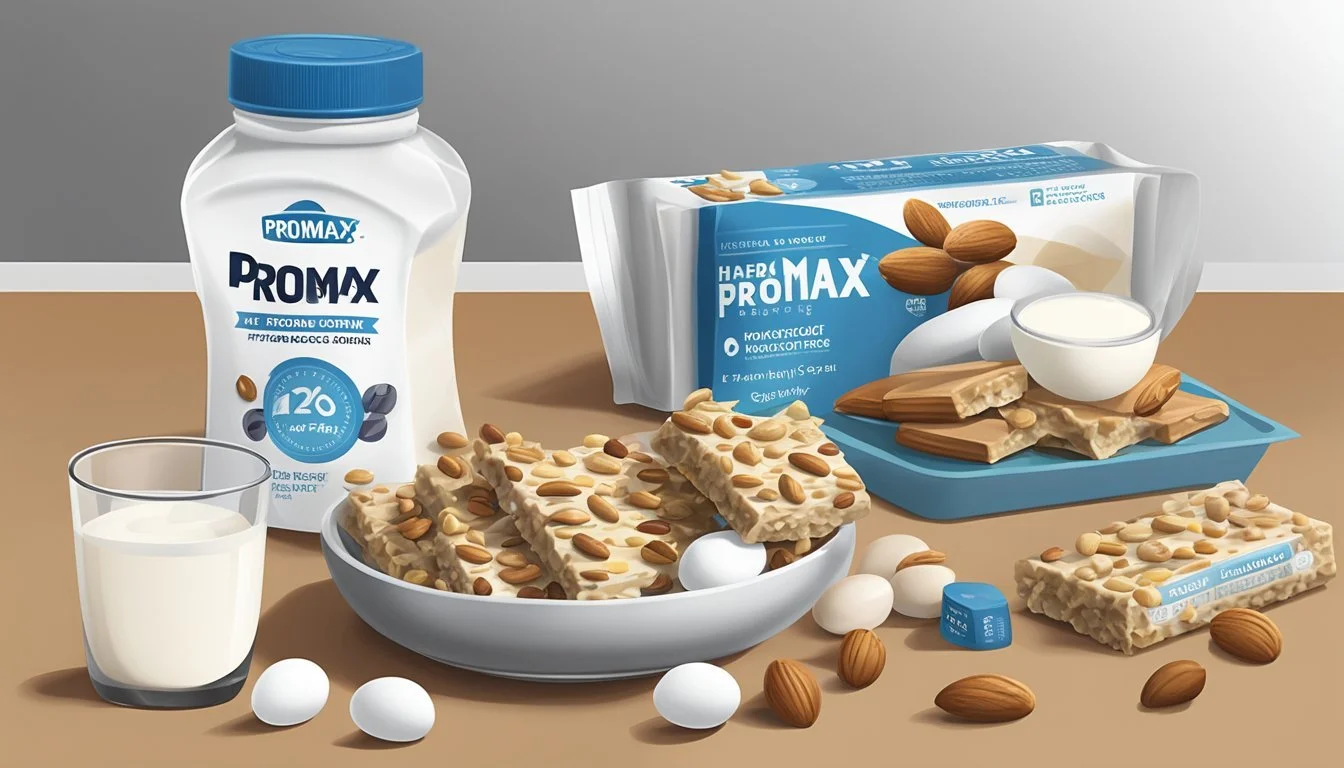How Many Servings of Promax Protein Bars Is Too Much
Expert Health Guidelines
Navigating the optimal number of Promax protein bars per day requires a balance between meeting nutritional needs and avoiding potential side effects. A standard Promax protein bar contains 20 grams of protein, which is significant considering dietary recommendations. Consuming more than two Promax protein bars in a day might be excessive for most people.
Protein bars are a convenient source of nutrition but should ideally complement a balanced diet rather than replace whole foods. Although these bars offer an efficient way to boost protein intake, eating too many can lead to gastrointestinal issues such as constipation or stomach pain. Monitoring your total daily protein intake, including meals and snacks, ensures you’re not overloading your body.
For individuals aiming for specific fitness goals such as muscle gain or weight loss, the calorie content and macronutrient profile of Promax bars should be considered. Each bar ranges from 150-350 calories, which can affect your caloric balance. Most individuals should limit their intake to one or two bars daily to avoid exceeding their nutritional needs.
Understanding Protein and Its Importance
Protein is essential for various bodily functions, contributing significantly to muscle growth, recovery, and overall health. This section explores the central roles of protein and the benefits of adequate protein intake.
Role of Protein in Body Function
Protein plays a critical role in building and repairing tissues. It consists of amino acids, which are the building blocks needed for various physiological processes. These amino acids help in muscle recovery, energy production, and maintaining a strong immune system.
Additionally, protein supports the production of enzymes and hormones that regulate bodily functions. For those leading an active lifestyle, protein is crucial for sustaining energy levels and aiding muscle repair after intense workouts. Without enough protein, the body might struggle to repair itself effectively, leading to slower recovery and decreased performance.
Health Benefits of Adequate Protein Intake
Consuming an adequate amount of protein offers numerous health benefits. It supports muscle growth and repair, making it indispensable for athletes and fitness enthusiasts. Regular intake of protein also helps in maintaining a healthy weight by promoting satiety, thus reducing overall calorie consumption.
Adequate protein intake benefits bone health by supporting the structural integrity of bones and tissues. Protein also plays a role in metabolic functions, helping in energy production and overall vitality. For those looking to lead a healthy lifestyle, ensuring sufficient protein intake is essential for both short-term performance and long-term health and wellness.
In summary, protein stands out as a vital nutrient needed for maintaining a healthy body, optimizing physical performance, and supporting various crucial bodily functions.
What Makes Promax Protein Bars
Promax Protein Bars are designed to provide a convenient and nutritious source of protein. They contain key ingredients such as protein, fiber, and vitamins, ensuring a balanced option for those looking to supplement their diet.
Key Ingredients and Nutritional Profile
Promax Protein Bars offer a blend of macronutrients including protein, carbohydrates, and fats. Each bar contains:
20 grams of protein to support muscle repair and growth.
A mix of 18 essential vitamins and minerals.
Around 37% carbs, 37% protein, and 26% fats, ensuring a balanced intake of nutrients.
Sources of protein include whey and soy, which are high-quality and easily digestible.
The bars are also designed with a focus on natural ingredients, avoiding artificial sweeteners and opting for natural ones such as stevia. This makes them a healthier choice compared to many other protein bars in the market.
Comparing Protein Content with Other Sources
In terms of protein content, a single Promax bar provides 20 grams of protein, which is comparable to other protein-rich foods. For perspective:
Food Item Protein Content 3 Large Eggs 21 grams 2 Cups of Low-Fat Milk 22 grams 4 Ounces of Canned Tuna 25 grams
Promax bars thus offer a convenient alternative to traditional protein sources, perfect for on-the-go nutrition. The inclusion of other essential nutrients also makes them a comprehensive dietary option beyond just protein intake.
By providing a balanced nutritional profile, Promax bars cater to those looking to maintain or enhance their fitness and diet regimen efficiently.
Daily Protein Requirements
Daily protein intake varies based on factors like age, gender, body weight, and level of physical activity. Understanding these requirements helps tailor protein consumption to individual needs.
Recommended Daily Intake for Different Demographics
Men generally need more protein than women due to differences in muscle mass and metabolic rate.
Men:
56 grams/day for a sedentary lifestyle.
Women:
46 grams/day for a sedentary lifestyle.
Athletes and Physically Active Individuals:
Approximately 1.2 to 2.2 grams of protein per kilogram of body weight.
Around 1 to 1.2 grams of protein per kilogram of body weight to maintain muscle mass and overall health.
Calculating Your Protein Needs
To calculate daily protein needs, multiply your weight in kilograms by the recommended grams of protein for your activity level.
Example for a sedentary woman:
If she weighs 60 kg, her daily protein requirement would be:
60 kg * 0.8 grams/kg = 48 grams/day
Example for an athlete:
If he weighs 80 kg, his daily protein requirement could be:
80 kg * 1.5 grams/kg = 120 grams/day
Use a simple formula:
Weight in kilograms * Protein requirement per kilogram = Daily protein intake.
Adjustments might be needed based on specific health or dietary needs.
Excessive Protein Intake and Its Effects
While protein is essential for muscle growth and overall health, consuming it in excess can lead to various short-term and long-term health concerns.
Recognizing the Symptoms of Overconsumption
Excessive protein intake can manifest in several ways. One of the immediate symptoms is dehydration. High protein diets increase the body's need for water to process nitrogen from protein, which can lead to dehydration if fluid intake is not also increased.
Other common symptoms may include digestive issues such as constipation or diarrhea. These occur when the body struggles to break down and absorb excessive amounts of protein. Weight gain is another symptom, as excess protein is converted into fat if not used for muscle synthesis.
Additionally, individuals might experience bad breath due to the body's process of ketosis, and headaches might result from dehydration.
The Long-Term Health Risks
Long-term excessive protein consumption poses several health risks. It can exacerbate kidney disease by putting extra strain on the kidneys. This is particularly concerning for individuals with pre-existing kidney conditions, as it accelerates kidney function decline.
Heart disease risk may rise, as some high-protein diets also lead to higher intake of saturated fats, impacting cardiovascular health. Furthermore, chronic high protein intake may contribute to bone health issues by increasing calcium loss through urine, potentially leading to osteoporosis over time.
Lastly, while muscle mass can increase with protein intake, there is a point where additional protein does not further benefit muscle growth and instead promotes weight gain. Managing protein intake within recommended levels ensures that one gains the benefits without facing these potential risks.
Guidelines for Consuming Promax Protein Bars
Consuming Promax Protein Bars can be beneficial for various purposes including muscle recovery and weight management. It is essential to understand the recommended serving sizes and how these bars fit into a balanced diet for optimal results.
How to Integrate Protein Bars into a Balanced Diet
Promax Protein Bars can serve as a protein supplement. They contain about 20 grams of protein per bar, equivalent to the protein found in three large eggs or two cups of low-fat milk. This makes them convenient for muscle recovery.
Use them to replace meals when time is short. With their balanced nutrients, they offer an efficient meal replacement option.
For those looking to manage weight or control blood sugar, the lower sugar options are ideal. These contain around 18 grams of protein and up to 14 grams of fiber, using all-natural sweeteners like stevia to avoid spikes in blood sugar levels.
To avoid excessive intake, aim to consume 1-2 bars per day within the context of a balanced diet. This ensures adequate intake of other essential nutrients from whole foods and avoids over-relying on supplements.
By incorporating Promax Protein Bars rightly, individuals can enjoy the benefits of added protein, improved muscle recovery, and healthy weight management without compromising their nutritional needs.
Alternatives to Protein Bars
For those looking to diversify their protein intake, there are various nutritious and convenient alternatives to protein bars. These options can include a mix of whole foods and plant-based sources, providing broad nutritional benefits and catering to different dietary preferences.
Incorporating Whole Foods for Protein
Incorporating whole foods is an effective way to boost protein intake. Lean meats such as chicken breast and turkey are excellent sources, providing essential amino acids with minimal fat.
Eggs and Greek yogurt can also be added to meals for a high-quality protein boost.
Including fish like salmon or tuna not only offers protein but also provides beneficial omega-3 fatty acids. Nuts and seeds are versatile, fitting well into snacks or salads, and deliver both protein and healthy fats.
Plant-Based Protein Sources
For those following a plant-based diet, there are plenty of protein-rich options available. Soy products such as tofu and tempeh offer complete protein and can be included in various dishes.
Legumes like lentils, beans, and chickpeas deliver substantial protein and fiber, making them ideal for soups, stews, and salads.
Incorporating vegetables like spinach and broccoli can provide an added boost, while fruits such as berries offer essential vitamins and antioxidants alongside their protein content.
Seeds, such as chia and flaxseed, are easy to add to smoothies and oatmeal for an extra protein kick.
With a focus on diverse and high-quality protein sources, it's possible to effectively meet dietary needs without relying solely on protein bars.
Selecting Quality Protein Sources
Selecting high-quality protein sources is crucial for maintaining energy levels, supporting muscle repair, and achieving dietary goals. Understanding food labels and consulting nutrition professionals can guide you in making informed choices.
Understanding Food Labels and Marketing Claims
Reading food labels is essential when choosing protein supplements. Pay attention to the amount of protein per serving, ensuring it meets your needs. Typically, a high-protein bar should contain at least 15-20 grams of protein.
Check for added sugars, which can contribute to unnecessary calories and affect energy levels. The presence of vitamins and minerals can indicate a more balanced product, beneficial for those seeking comprehensive nutrition.
Be wary of marketing claims that overemphasize benefits. For example, terms like "natural" or "organic" do not always mean the product is healthier. Instead, focus on the actual nutritional content.
Seeking Guidance from Nutrition Professionals
Consulting with a registered dietitian can provide personalized advice on protein intake. They can help you determine the appropriate amount based on your age, sex, weight, and activity level.
Dietitians can also recommend high-protein foods and appropriate protein supplements. In addition to protein bars, consider options like yogurt and other high-protein foods that fit into a balanced diet.
For active people or those with specific dietary restrictions, professional guidance ensures that you select products that complement your nutritional needs. This minimizes the risk of overconsuming protein bars and helps maintain optimal health.
Summary and Best Practices
Consuming Promax Protein Bars can offer convenience when managing nutrition needs, thanks to their portability and ease of use. These bars are designed to support muscle growth and provide a balanced mix of macronutrients.
For optimal health benefits, moderation is key. A sensible number of servings per day for most individuals is 1-2 bars, depending on dietary needs.
Health Benefits
Promax Protein Bars contain 20 grams of protein per serving. This can help meet daily protein requirements, essential for muscle repair and growth.
Caloric Intake
Protein bars typically range between 150 to 350 calories. Ensure that these fit within daily caloric goals, whether aiming for a caloric surplus or deficit.
Flavors
With a variety of flavors available, it’s possible to avoid flavor fatigue. Trying different flavors like chocolate, peanut butter, or mixed berry can keep your diet enjoyable.
Best Practices:
Read Nutritional Labels: Check for ingredients and choose bars without artificial sweeteners or preservatives.
Monitor Total Protein Intake: Ensure that intake from protein bars is balanced with other protein sources in the diet.
Adjust Based on Activity Level: More active individuals may benefit from additional protein, while less active individuals may not need as much.
Stay Hydrated: Protein can be dehydrating, so accompany bars with adequate water intake.
By following these guidelines, individuals can effectively incorporate Promax Protein Bars into a balanced diet.










